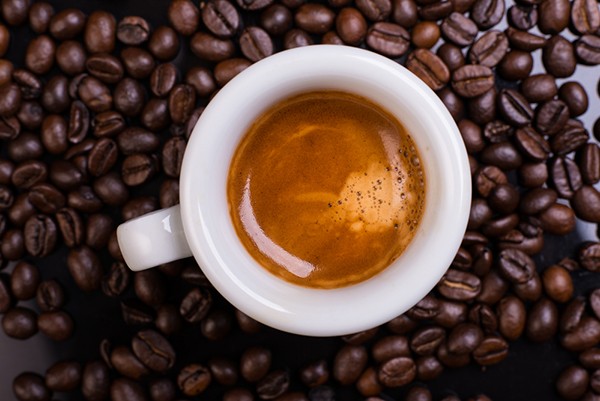Espresso
As someone who has immersed myself in the rich world of coffee, I find that espresso transcends mere beverage status; it represents a profound experience. My first encounter with espresso took place in a quaint café tucked away in the cobblestone streets of Rome. The barista, with remarkable skill, pulled a shot that was both captivating and invigorating. That tiny cup contained a complexity I had never encountered before, igniting a deep appreciation for the artistry and science behind espresso.
The Allure of Espresso
The charm of espresso lies not just in its robust flavor but in the meticulous process involved in its creation. At its essence, espresso is a concentrated form of coffee served in small, intense shots. It is crafted by forcing nearly boiling water through finely ground coffee beans under high pressure. This method extracts flavors and compounds in a manner that traditional brewing techniques cannot achieve, resulting in a beverage that is rich, robust, and filled with intricate nuances.
What captivates me the most is the crema—the golden-brown foam that crowns a freshly pulled shot. This crema is a hallmark of expertly crafted espresso, indicating that the oils have been correctly extracted from the coffee grounds. It is not merely visually appealing; it adds a velvety texture and a hint of sweetness that perfectly balances the inherent bitterness of the espresso.
A Journey Through History
Exploring the history of espresso, I discovered its origins in Italy during the early 20th century. The invention of the espresso machine by Angelo Moriondo in 1884, later refined by Luigi Bezzera and Desiderio Pavoni, revolutionized coffee consumption. These machines facilitated rapid brewing, catering to the fast-paced lifestyles that were emerging in Italian cities. Espresso bars quickly evolved into social hubs, where people gathered for conversation and a quick caffeine fix.
During my travels to Milan, I visited some of the city’s oldest espresso bars. I witnessed the cultural significance of espresso in daily Italian life; it’s more than just a drink—it's a ritual. Italians often stand at the bar, exchanging pleasantries and savoring their espresso in a few quick sips before heading to their next appointment. This communal experience highlights how espresso serves as both a personal pleasure and a social connector.
Bringing the Culture Home
Inspired by my experiences, I brought a piece of that vibrant culture into my own life by investing in a home espresso machine—a gleaming piece of engineering that became the centerpiece of my kitchen. Learning to pull the perfect shot has been a journey of trial and error. The grind size, tamping pressure, and water temperature—each variable must be just right. Each morning presents an opportunity to refine my technique, deepening my connection to the centuries-old tradition of espresso making.

Espresso also serves as the foundation for many of my favorite coffee drinks. The simplicity of an espresso macchiato, topped with just a dollop of steamed milk, or the indulgence of a cappuccino, with equal parts espresso, steamed milk, and foam, showcase espresso’s versatility while maintaining its core essence.
The Complexity of Coffee Sourcing
As I delved deeper into the world of espresso, my curiosity extended to the sourcing of coffee beans. The flavor profile of an espresso shot can dramatically change depending on the bean's origin and roast level. Ethiopian beans might offer bright, fruity notes, while Brazilian beans could deliver nuttier, chocolatey flavors. Roasting adds another layer of complexity—light roasts preserve the bean's original characteristics, while dark roasts unveil deeper, caramelized flavors.
My commitment to sustainability and ethical sourcing grew as I explored this realm. I sought out coffee roasters who practiced fair trade and supported farmers with sustainable methods. Knowing that my enjoyment of espresso positively impacts the livelihoods of those who cultivate the beans adds a meaningful dimension to my daily ritual.
:max_bytes(150000):strip_icc()/__opt__aboutcom__coeus__resources__content_migration__serious_eats__seriouseats.com__2018__06__20180613-coffee-vs-espresso-vicky-wasik-3-1500x1125-418fa2a14e7249b18040c2c34bf8569c.jpg)
The Science Behind the Brew
The science of espresso is as captivating as its cultural significance. Precise measurements—typically around 7 grams of coffee grounds for a single shot—and an extraction time of 20 to 30 seconds are critical factors. Even slight deviations can lead to under-extraction or over-extraction, resulting in undesirable sourness or bitterness. This precision is both a challenge and a reward, making the perfect shot of espresso a triumph that harmonizes art and science.
I’ve also experimented with various brewing methods, like the Moka pot and AeroPress. While these techniques may not produce true espresso, they offer concentrated coffee experiences that evoke its essence. These accessible tools allow me to enjoy robust coffee even when away from my machine.
Sharing the Experience
One of my greatest joys is sharing espresso with friends and family. Hosting gatherings where I can serve a variety of espresso-based drinks allows me to introduce others to the depth and richness of this beverage. Witnessing someone’s eyes light up upon tasting a well-crafted espresso for the first time is always rewarding.
Espresso has also enhanced my appreciation for other culinary experiences. The palate I’ve developed through tasting various espresso shots has heightened my sensitivity to flavors in food and wine. My ability to discern subtle notes and complexities has enriched my overall gastronomic journey.
Conclusion
In reflection, espresso is more than just a drink to me; it embodies a passion that encompasses history, culture, science, and community. It serves as a daily reminder of life's small pleasures and the profound impact they can have when approached with curiosity and dedication. Each cup tells a story, from the hands of the farmers who cultivate the beans to the baristas who expertly extract their essence.
As I continue to explore and learn, I am reminded that espresso, much like life, is a blend of precision and artistry. It is about balance, attention to detail, and appreciating the moment. Whether enjoyed in a bustling Italian café or the tranquility of my home, espresso remains a cherished part of my world—a simple yet profound expression of the human experience.
